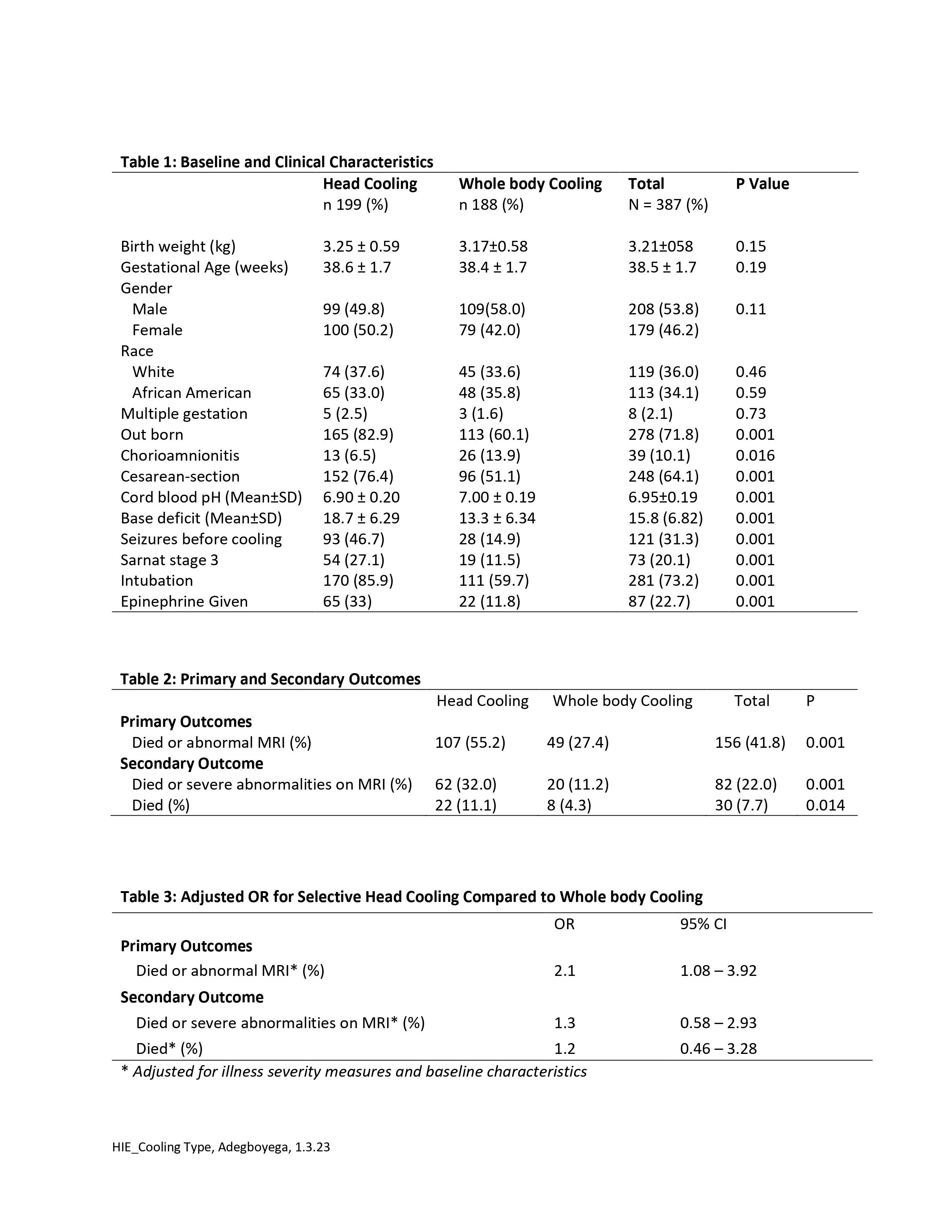Neonatal General
Neonatal General 6: Neurology
710 - Does Whole Body Cooling Lead to Better Outcomes Compared to Selective Head Cooling in Infants with Hypoxic Ischemic Encephalopathy?
Publication Number: 710.234
- OA
Oluwatobi Adegboyega, MD (he/him/his)
Neonatology Fellow
Thomas Jefferson University/Nemours Children/Christiana Care
Media, Pennsylvania, United States
Presenting Author(s)
Background:
Hypoxic Ischemic Encephalopathy (HIE) is a cause of significant morbidity and mortality in the neonatal population. Therapeutic Hypothermia (TH) is effective in improving survival and neurodevelopmental outcomes in neonates with moderate to severe HIE, therefore, it has become the standard of care. It is unclear if there is a superior method of providing TH. Both selective head cooling (SHC) and whole-body cooling (WBC) have resulted in better outcomes in Infants with HIE. SHC is no longer the first option for TH in many centers and no large data studies have compared brain Magnetic Resonance Imaging (MRI) findings and mortality in SHC and WBC. Brain MRI findings has been shown to correlate with neurodevelopment outcomes.
Objective:
To compare mortality and brain MRI imaging among infants with HIE who received SHC and WBC.
Design/Methods: This is a retrospective study of neonates born at ≥35 weeks gestation at a level III NICU from November 2006 to December 2022, who were diagnosed with HIE, received TH, and had a brain MRI performed or died before MRI. The severity of the changes on MRI was assessed by a blinded neuro-radiologist using the basal ganglia/watershed (BG/W) scoring system. The primary outcome was an abnormal brain MRI or death, and secondary outcomes were death and severe abnormalities on brain MRI or death. Regression analysis was used to adjust for clinical and demographic characteristics.
Results:
A total of 380 neonates met inclusion criteria. SHC was used in 194 (51%), and 179 (47%) received WBC. 7(2%) infants were not included because the TH type was unclear, or the infant received both. The mean gestational age (GA) was 38.5 ± 1.7 weeks, and 72% of neonates were delivered at an outside hospital (Table 1). Mean cord PH was 6.95 ± 0.19 and in 31%, there was reported seizure activity prior to onset of TH. Neonates in the SHC group had some significantly varied characteristics compared to the WBC group (Table 1) which were adjusted for in analysis. The odds ratio of combined abnormal MRI or death was significantly higher in neonates who received SHC, OR 2.05 95% CI, 1.08 – 3.92 (Table 3). Death, severe abnormalities on brain MRI or death did not retain statistical significance after adjusting for confounders (Table 2 & 3).
Conclusion(s): In a large retrospective analysis after adjusting for illness severity, whole body cooling for HIE was found to have better short- term outcome compared to selective head cooling. It is unclear if WBC leads to better short-term outcomes as clinical management of HIE has evolved overtime and SHC mostly preceded WBC.
